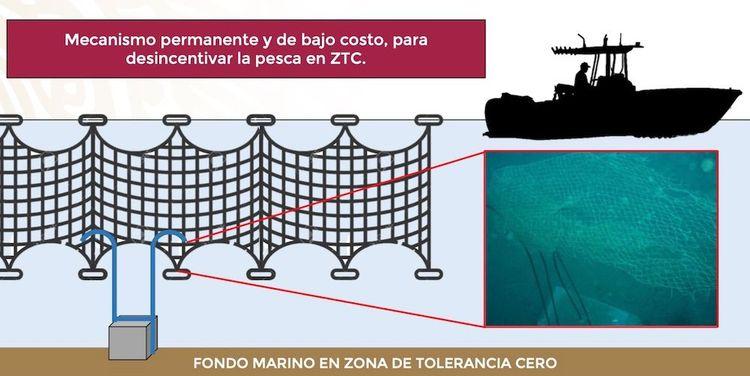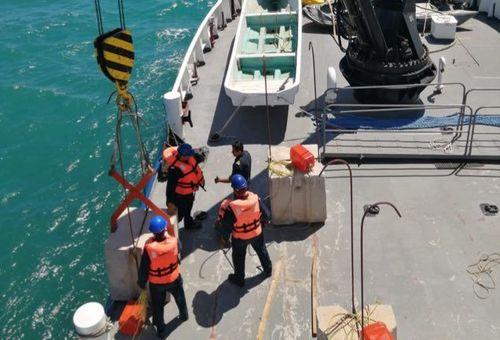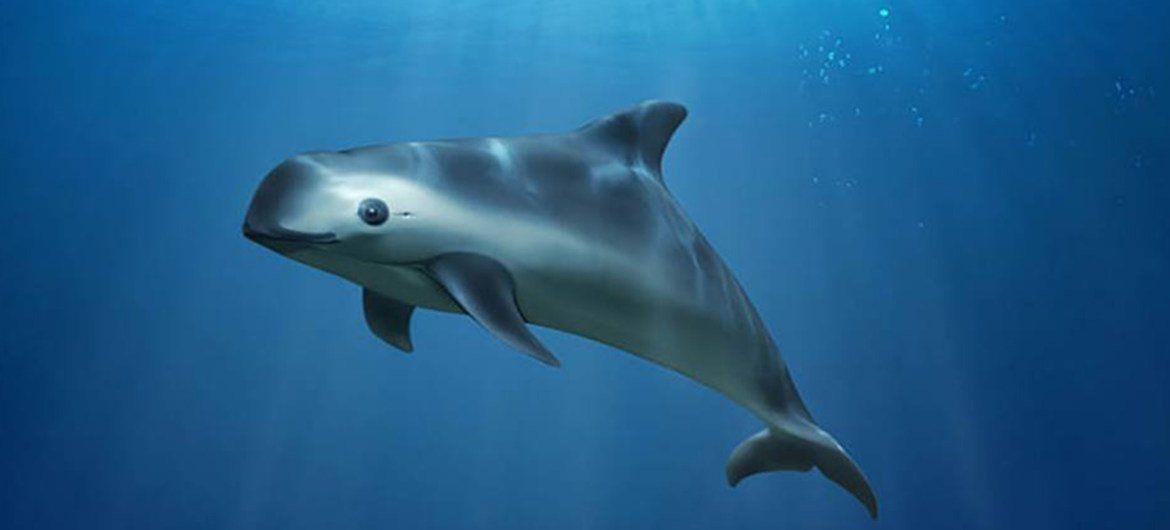The new plan for the protection of the vaquita marina worries fishermen in San Felipe, Baja California, more because of the need for follow-up actions by the federal government than because of its effectiveness.
As if it were a marine wall, the project carried out by the Secretariat of the Navy (Semar) consists of planting 193 concrete blocks, adapted with hooks, in the shelter's Zero Tolerance Zone (ZTC), near the communities of San Felipe, Puerto Peñasco and Golfo de Santa Clara.
The objective is that the hooks attached to the concrete blocks can entangle the gillnets to hold them and disable them from the boats. Including chinchorro-type gills used in totoaba fishing, among which the vaquita marina is commonly caught by illegal or incidental capture.

Presented description of the operating mechanism in the planting of concrete blocks. Image: Semar.
The project is presented as a partial solution to protect the 10 specimens that are estimated to still swim in the waters of the Upper Gulf of California.
“Blocks and hooks can work, but they (the fishermen) know that every time the six-year term changes, the government changes its mind. So what is very worrying in the particular case of this project is that it will be abandoned,” said Enrique Sanjurjo, executive director of Alternative Fishing of Baja California (ABC), a fishermen's organization in San Felipe.
According to Sanjurjo, the danger of not following up on a project such as the one proposed is that it could lead to an abandonment of the gillnets that are stuck in the hooks, which will continue to be deadly both for the vaquita marina and for other species.
“The biggest concern is what will happen to the networks,” said the director of Pesca ABC.
The Environmental Impact Statement (MIA), prepared by Semar, indicates that the project will last 6 years, with an estimated total investment of 3 million 784 thousand 24 pesos, which will be divided into three phases: construction, operation and prevention, mitigation and/or compensation programs.
With regard to gillnets, the MIA mentions a program to recover those that remain on the hooks. The description only indicates that a boat destined for this task will be allowed to enter, as well as the delivery of the nets to the National Fisheries and Aquaculture Commission (Conapesca). A consideration that covers only six years of the project.
The environmental impacts considered by the plan include the suspension of sediments, contamination by waste from hooked nets, the movement of flora and fauna, accidental risks, and others.
But it is Semar herself that evaluates and categorizes the impacts as “not significant”. Except for the social stress factor to which he attributes the label “not significant”, being the biggest impact of the plan.
For now, the project is in its first year involving site preparation, operation and maintenance, monitoring programs (such as environmental monitoring and removal of gillnets) and meetings with authorities.
Regarding the duration, Semar indicates that “during the life of the project, meetings will be held with the agencies involved to determine the effectiveness of the project, so that, according to the results, an extension of the project is proposed or the removal of the concrete blocks is determined”.

Cement block planting in the ZTC. Photo: Secretariat of the Navy.
Between gillnets and illegal fishing
Faced with the critical scenario, it could be considered that the federal government is facing the latest efforts to save the vaquita marina. But a genetic study published in the journal Science by researchers at the University of California in Los Angeles pointed out that there is still an opportunity to rescue the porpoise.
By collecting genetic, population and ecological information, the researchers made a projection in which they concluded that it is not a problem of inbreeding that prevents the reproduction of the marine vaquita.
Illegal gillnet fishing remains the main enemy. In such a way that by completely eliminating this type of capture, the probability of survival increases to 90%.
“The problem here is that in the last five years, illegal fishermen have been allowed in. They are already established and have been working for years... Now it's more difficult, but it's a fact that if you don't resolve the issue of illegal fishing, it's very difficult to solve the rest,” said Enrique Sanjurjo during the interview.
Sanjurjo points out that the solution could lie in reconverting fishermen who use chinchorro through effective fisheries management.
“Considering the species for fishing in the Upper Gulf of California, there is an enormous possibility of diversifying so that chicharro is used less. This involves an agile process of ordering and issuing permits in this area, but the bureaucratic reality is different... the concentration of the efforts of the fishing sector remains in a single Conapesca office in Mazatlán, Sinaloa,” he lamented.



Comentarios (0)